Have you ever wondered why the sight of an animal in pain evokes such strong emotions in us? Is it their inherent innocence, the love and loyalty they show to their owners, or their vulnerability that strikes a chord? Regardless of the reason, we can’t help but root for our furry friends and want what’s best for them. You can deny it, but I know you shed tears for Hachi. Poor Parker was never coming back home.
Home is a haven of safety, comfort, and love, a fundamental aspect of our survival. However, in the ongoing war between Ukraine and Russia, millions have lost their homes. But they don’t leave their pets behind; they take them along. The animals have suffered just as much during the war with the deafening sounds, chaos, and lack of food.
As much as we rely on our pets for comfort, they seem to need us just as much. A video of a woman cradling and soothing a cat amid blaring sirens in Kyiv raised a question: how have the animals of Ukraine been affected by the war? Let’s dive in and find out! More info: Instagram
A video capturing the moment shows a woman carrying and comforting a black cat during a period of loud sirens in Kyiv, Ukraine.
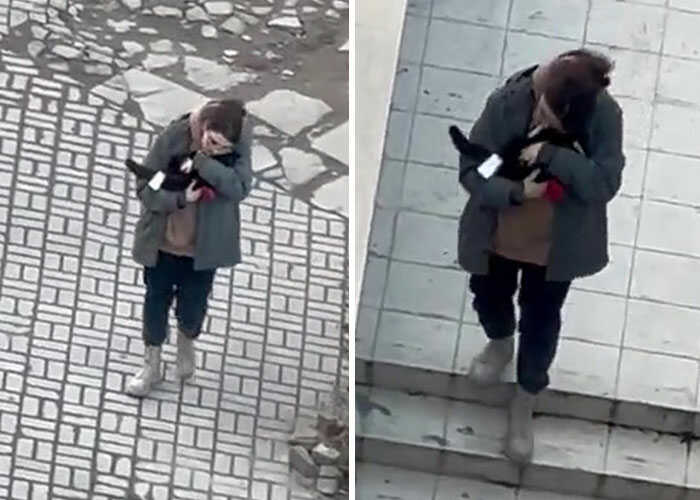
The ongoing war in Ukraine presents us with grim reports every day. However, among the bleak news, there are a few heartening incidents that reignite our faith in humanity. One such moment was captured by Trey Yingst, a foreign correspondent based in Ukraine. In a Twitter video, a young woman is seen walking down the sidewalk with a black cat cradled in her arms. Despite the air raid sirens blaring across Kyiv, she lovingly rubs her cheek against the feline’s head, exchanging comfort in a touching moment of compassion.
It’s uncertain whether the woman is the cat’s owner or if she had discovered it alone. Nevertheless, this act of kindness portrays the need for both humans and animals to feel secure in any circumstance. Trey has shared multiple similar videos, showcasing people’s compassion towards animals, and declares, “Humanity endures.” This is an example of how in the darkest of moments, kindness and empathy can shine through, offering hope to those in need.
The video served as a powerful reminder that during war, pets are also vulnerable and need comfort and care just like humans do.
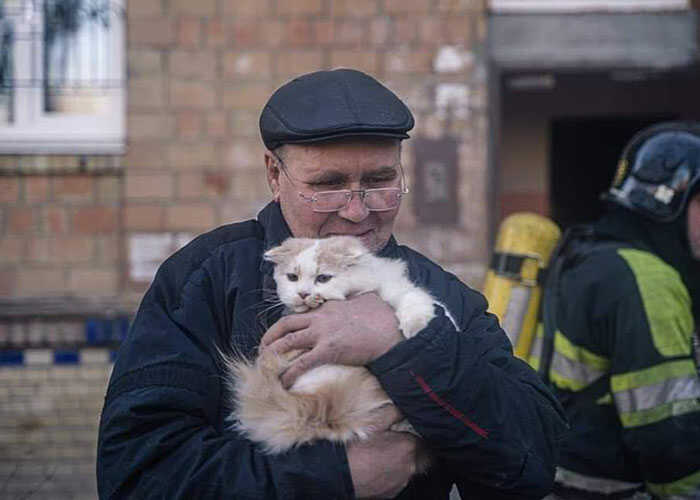
The video is undoubtedly heartwarming, yet it is hard not to feel a tinge of sadness. Without proper context, one can’t help but wonder if the cat is the only vestige of home that remains. Before the war, they once nestled together in tranquility, contemplating the trivialities of life.
However, looking at the pictures below, it is clear that the intricate universes created by people have been decimated and reduced to ashes. Amidst this chaos, having a pet can provide a sense of familiarity and comfort, almost like a beloved family member. It can serve as a beacon of hope amidst the ruins, a glimmer of light in the darkness.
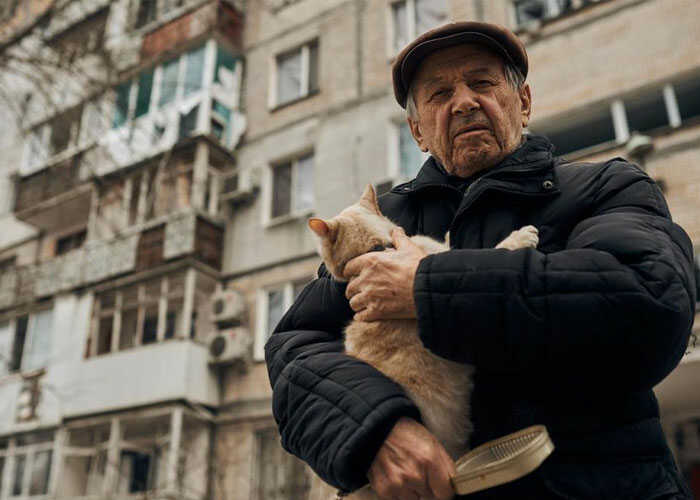
In times of destruction, the relationship between individuals and their pets becomes even more apparent as they provide each other with a deep sense of togetherness.
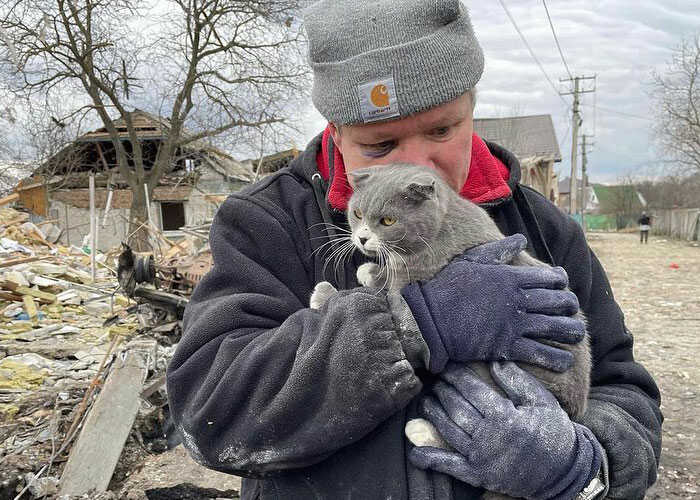
We humans tend to cling to whatever brings us a sense of tranquility. And when our hard-earned possessions crumble before us, finding solace in the warm embrace of a furry companion can be the only respite. However, the experience can be just as jarring for the pet, who may have suffered through the chaos of fire, rubble, and commotion. In such instances, the need for familiarity becomes even more pronounced.
Numerous photographs captured around the world bear witness to this truth – the yearning for a comforting hug. If any among you have ever owned a feline friend, you’re aware that cuddling with them isn’t always an easy feat unless they’re in the mood.
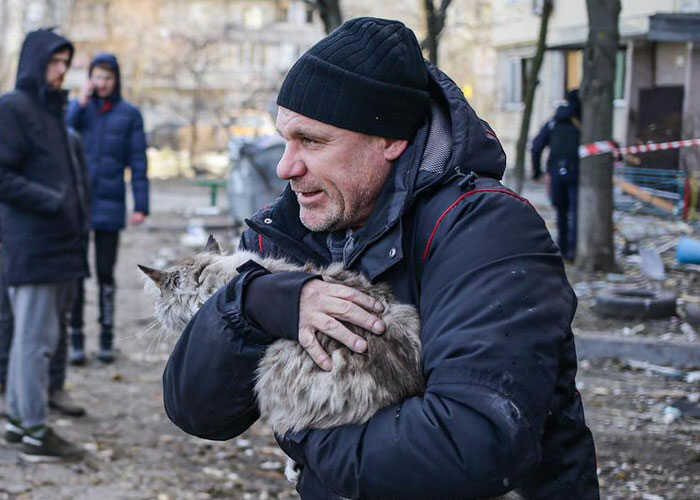
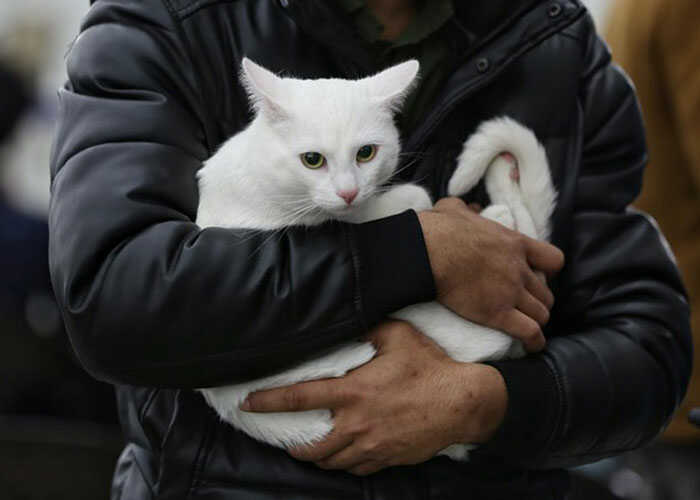
According to Erica N. Feuerbacher, an Associate Professor in Applied Animal Behavior & Welfare at Virginia Tech College, animals possess the ability to detect changes in their environment. Even something as seemingly benign as fireworks can cause a pet to become uneasy, which illustrates the level of distress that can be initiated by a wartime situation. Feuerbacher goes on to explain that a disruption to an animal’s daily routine and changes in their owner’s behavior, particularly if the owner is displaying more stressed and frantic behavior, can all contribute to a pet’s stress.
Feuerbacher also notes that people often carry their pets for comfort, keeping them close in times of distress. In other situations, older pets or those with mobility challenges may become too frightened to walk if there is active shelling in the area, necessitating their owner to carry them.
In the aftermath of the disaster, puppies can be seen among the debris, seeking the reassurance and comfort of their owners.
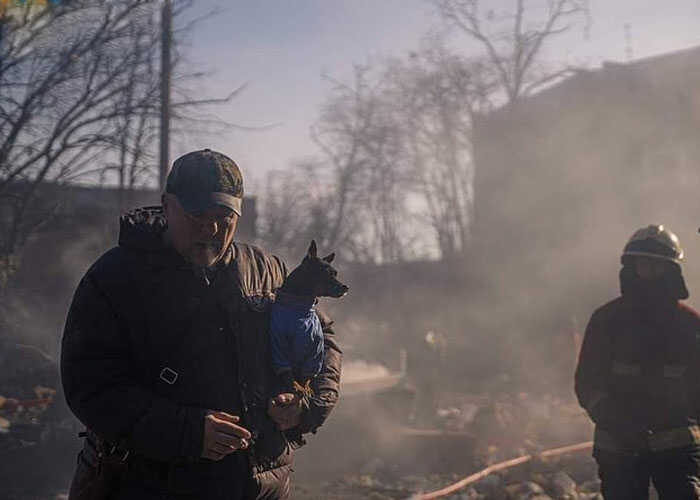
As humans, we often underestimate the perceptual abilities of our furry companions. The heightened senses of dogs, especially their superior sense of smell and hearing, allow them to perceive danger in ways we cannot fathom. In the face of chaos and destruction, however, these same senses can lead to confusion and distortion. Even the barometric pressure can be a warning sign for them.
According to the experts at Wag Walking, PTSD can be a serious threat to a dog’s mental health after a traumatic experience. It’s crucial that owners show their pets the love and care they need during times of distress. After all, just like us, dogs crave the comfort and support of their families. So, while pups may seem invincible at times, it’s important to remember that they too can suffer from the effects of trauma.
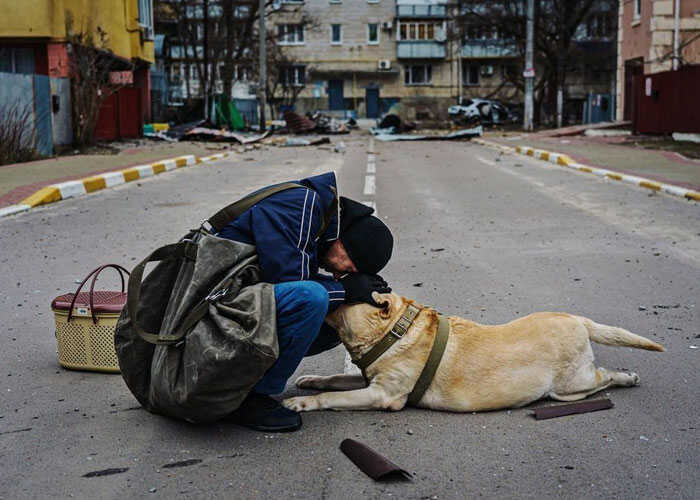
Erica explained that companion animals may exhibit similar, if not more severe, symptoms than humans when faced with unexpected situations, as they may not be adequately prepared to cope. She provided an overview of the signs to look out for and how to address them: “You should observe your pet for indications of fear or anxiety, such as reluctance to perform activities they once enjoyed, displaying signs of stress in specific circumstances (such as excessive panting, whining, lip-licking, trembling, or ears pinned back against the head), or a general feeling of unwellness. If you notice any of these changes in your dog, attempt to avoid those situations if feasible.”
“Additionally, try to create a pleasant and engaging environment for your pet by providing treats, favorite toys, and plenty of comfort. Physical contact, such as petting, has been shown to lower heart rate, blood pressure, and cortisol levels in dogs. If the symptoms are severe, consider consulting a veterinary behaviorist for medication and an applied behaviorist for more detailed behavior modification plans.”
Furry friends are always present in wars, either assisting in war duties or providing companionship.
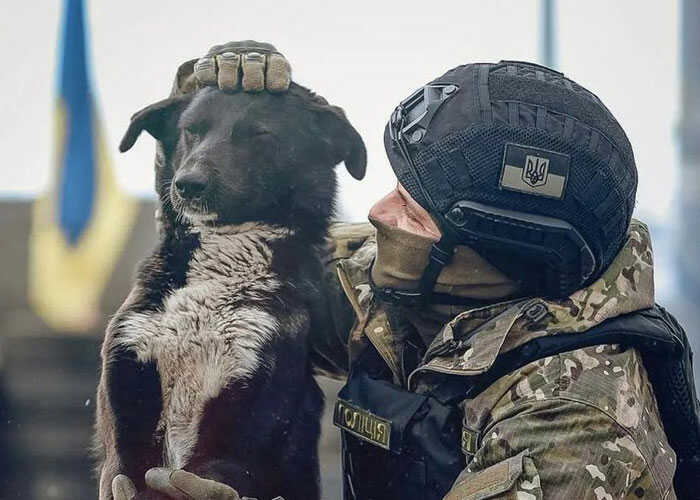
The impact of war on animals is far-reaching and multifaceted, and among the various roles that animals have played in wars, let’s focus on those who served. Military.com reports that dogs, for instance, were deployed to disrupt enemy formations by recklessly charging into their ranks and tearing down as many adversaries as possible.
Moreover, these canines have also been instrumental in alerting soldiers to incoming artillery, gas, and infantry attacks. During the conflicts in Iraq and Afghanistan, dogs played a pivotal role in detecting explosives, aiding soldiers in avoiding the hazards of improvised explosive devices and landmines.
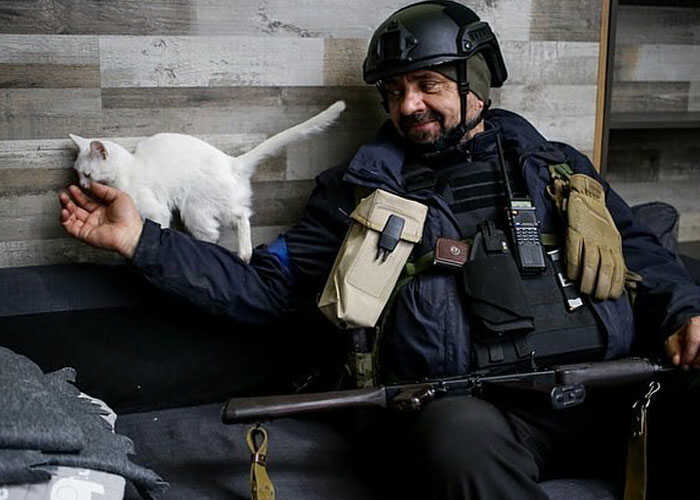
During wartime, dogs were not the sole contributors to the soldiers’ cause, as felines also played a significant role! The National WW2 Museum reports that cats were frequently brought on board ships to assist with rodent extermination, as well as in barracks and field offices. Effective mousers were essential for safeguarding limited food supplies, mitigating the risk of diseases, and preventing rodents from gnawing through vital ropes and wiring.
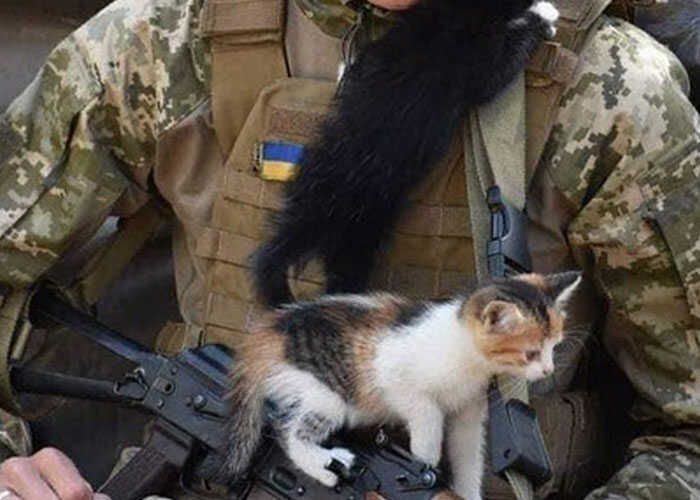
Soldiers, listen up! Cats make awesome mascots for boosting morale and catching pesky mice trying to steal your food.
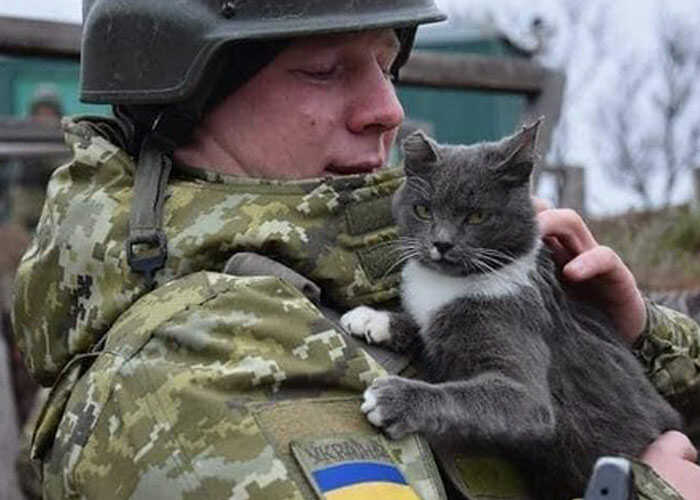
During times of war, animals served not only as valuable allies in the battlefield but also as sources of comfort and home-like familiarity for soldiers who were away from their loved ones. Many soldiers and sailors would adopt pets and mascots along the way, finding solace in the companionship of abandoned kittens and puppies.
Such heartwarming stories of animal-human relationships, much like Rambo’s tale which can be found in the link provided, demonstrate how the roles of animal allies and mascots continue to hold relevance in modern times.
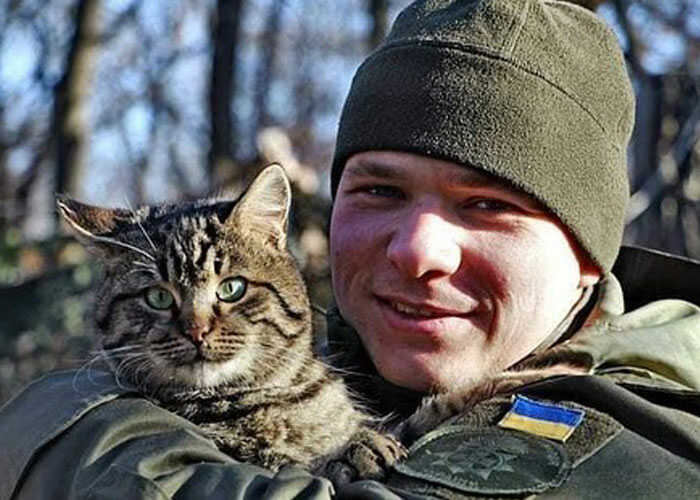
War can have dire consequences for zoo animals, livestock, and working animals who may be injured, killed, or left without proper care in conflict zones.
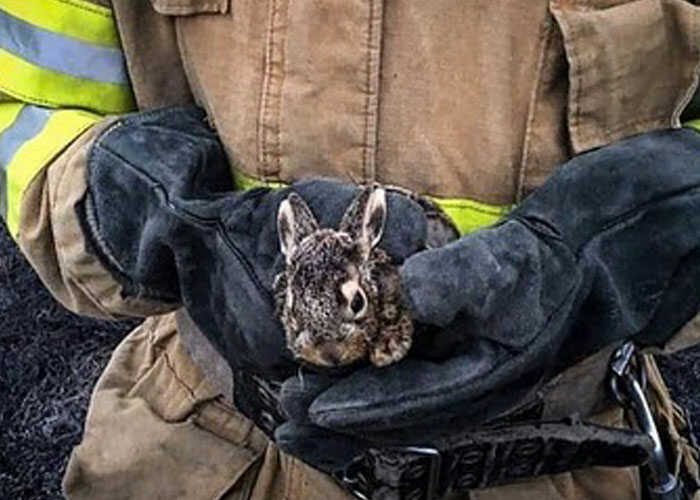
The wholesome reality enjoyed by mascot animals is a far cry from that of their non-mascot counterparts. Wars, as reported by the Conflict and Environment Observatory (CEOBS), have had devastating effects on animals.
These include casualties from enemy attacks, mistreatment from inadequate training and housing, overexertion, exposure to extreme weather, starvation, dehydration, disease, and abandonment.
It’s not only pets that are at risk; wildlife is also affected by human conflicts, with habitats being destroyed and breeding grounds being compromised. Even animals in zoos aren’t safe, as they’re often seen as a liability and can suffer from being killed, injured, starved, or abandoned.
Livestock and working animals are also vulnerable, as owners may have to leave them behind in order to flee a potential warzone. There are countless other harrowing scenarios that can unfold as a result of conflict.
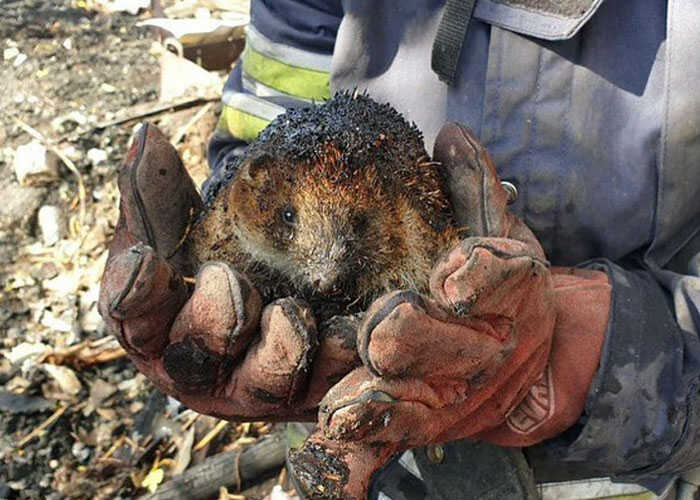
Despite the challenges they may face, many pet owners in Ukraine prioritize staying with their animals over leaving them behind.
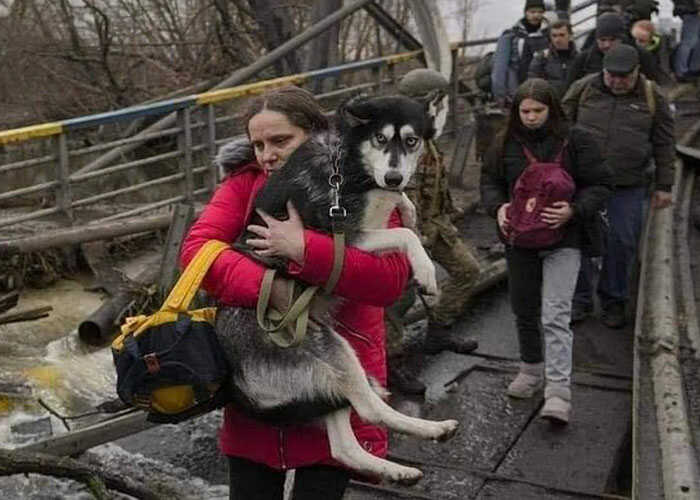
Humans have an innate desire to be with their animal companions, even in times of great risk. The question naturally arises: why take such a gamble for a pet? Transitions Life Care provides a compelling answer.
Animals can offer a sense of purpose and motivation, particularly when one is feeling down or stressed. They possess a remarkable ability to soothe humans and are often attuned to their owner’s emotional state, offering cuddles and affection when needed most.
The connection between pet and owner is profound, providing mutual support in both good times and bad. The significance of this bond cannot be overstated, as it adds meaning to our lives and enriches our existence.
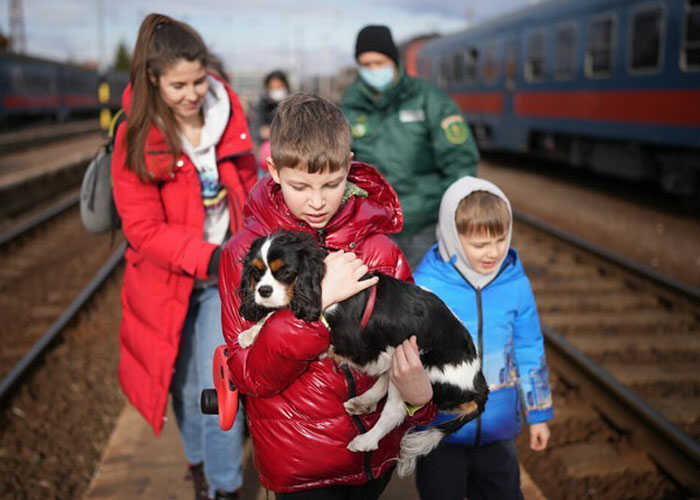
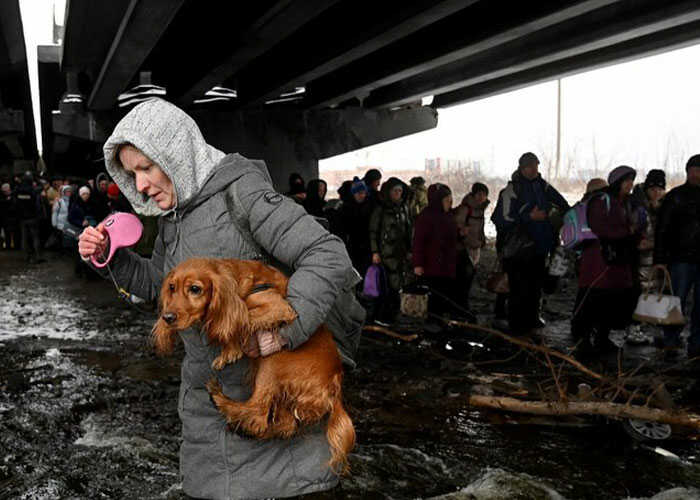
The future is uncertain, but acts of kindness serve as a powerful reminder to remain human in the face of adversity.
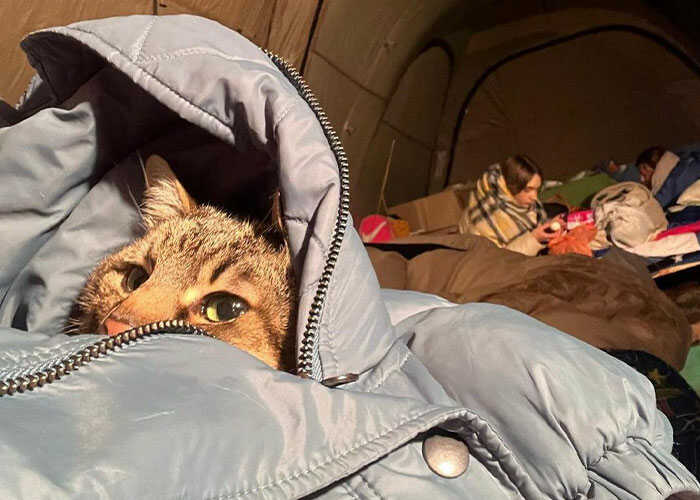
Erica’s perspective on animal welfare in conflict zones highlights the importance of considering the animal’s point of view. While humans may comprehend the situation’s magnitude, animals are left to navigate the chaos without understanding what’s happening.
Whether domesticated or wild, they experience the same terrifying stimuli, but lack the cognitive capacity to comprehend it. In such situations, it’s crucial to support charities that aid animal evacuation, reunite owners with their pets, or provide shelters for animals impacted by the conflict. By doing so, we can contribute to animal welfare even if we cannot be present physically.
We stand with Ukraine and its people, pets included.
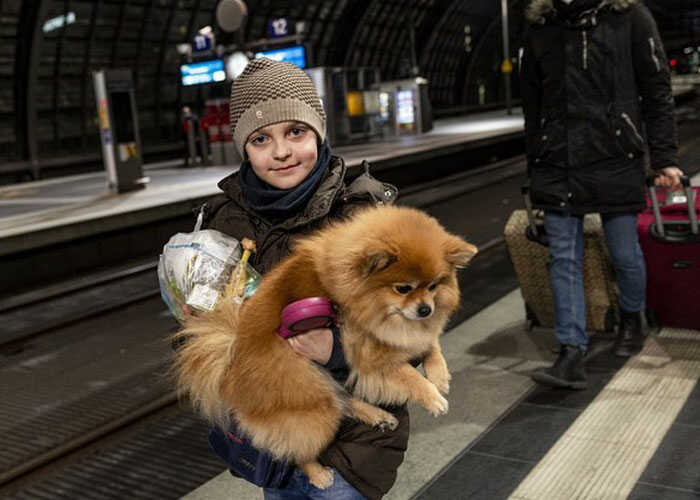
The trajectory of this conflict and the scope of its devastation remain uncertain until its conclusion. Nevertheless, we can confirm that millions have been forced from their dwellings, innumerable lives have been lost, and a great many more periods of uncertainty lie ahead.
However, amidst the tumult and chaos, we can choose to remain true to our humanity: to show compassion, extend kindness, and embrace humility. After all, one never knows when they might require the aid or solace of a stranger. Should you wish to contribute, here are some resources to assist Ukraine.
Additionally, we have curated a collection of moving photographs depicting individuals fleeing with their companions at the outset of the conflict, which may bring some respite to your soul.
As we part ways, I implore you to share your reflections with us in the comments section, as others have done before you. Until then, I bid you a splendid day!

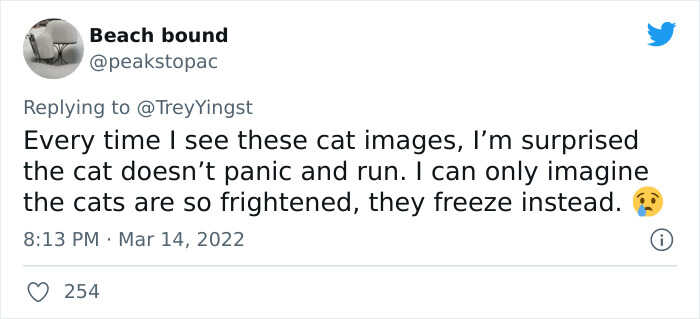
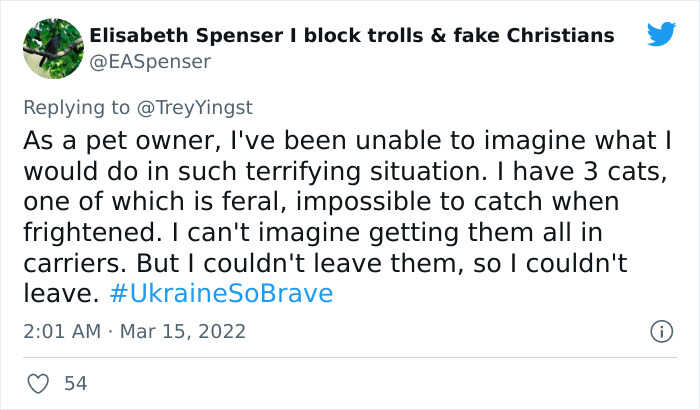
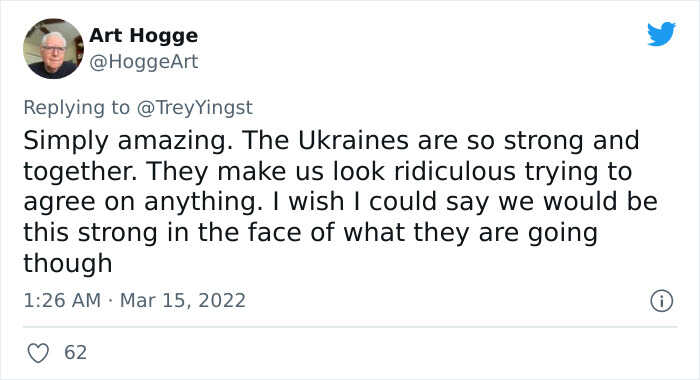

Follow Embora Cats on Google News!
Recommended:
Share this article:
